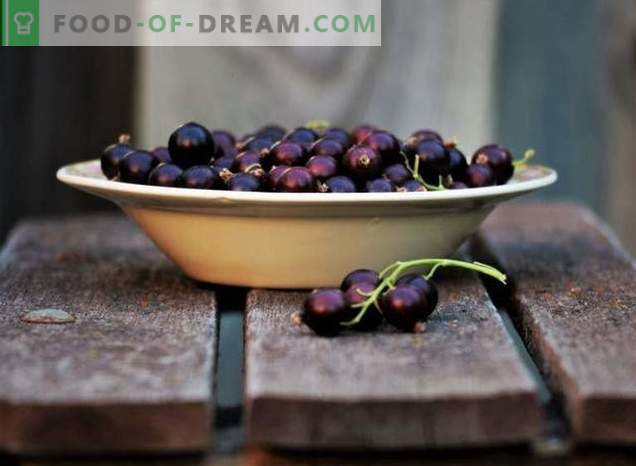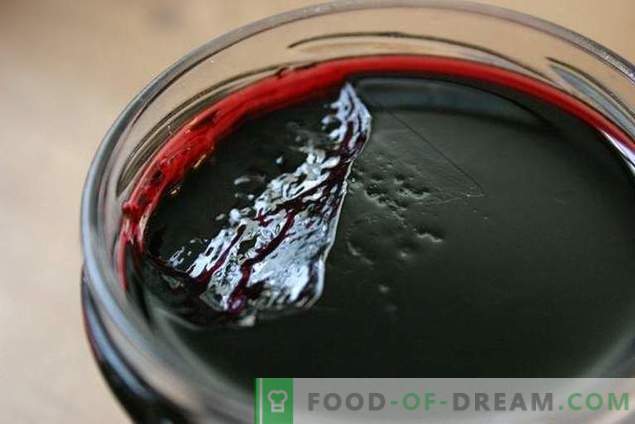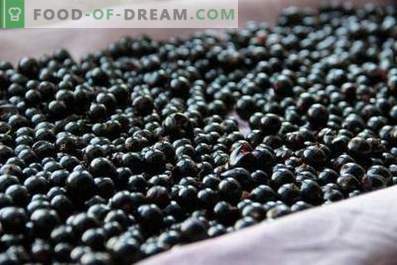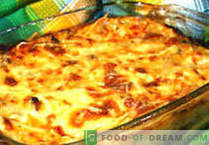Black currant is the most popular, the most useful berry! Its berries contain a large amount of vitamins C, B, P, PP, provitamin A, organic acids, sugar, pectin (gelling) substances, mineral salts - all this is in black currant, for which it is called the “pantry of vitamins”. According to the content of vitamin C, its berries are inferior only to wild rose and actinidia. Therefore, black currant is the record for the content of vitamin C among fruit and berry crops: only 100 g of currant berries cover the daily rate needed by the body.

Content:
- Useful properties of black currant
- Black currant jam
- Black currant jam
- Currant Kissel
- Infusion of currant leaves
- Black Currant Wine
- Wine from a mixture of berries
Useful properties of black currant
Black currant is a valuable medicinal perennial plant. Shrub is quite high - up to 1, 5-2 m. Fruiting begins on the 2-3rd year after planting, depending on the variety.
Fresh and processed black currant berries (jam, juice, jam, jelly, jam, mashed with sugar) are especially recommended for the elderly and weakened after the illness, surgery, children.
Blackcurrant juice with honey is drunk with bronchitis, coughing, hoarseness, it is recommended as an antipyretic, diaphoretic, anti-inflammatory and hypoglycemic agent, as well as a means of tonic cardiovascular system. Berries are useful for colds, some infectious diseases, anemia, as well as gastritis with low acidity. Black currant leaves also have medicinal properties and are used in the form of infusions or decoctions as a diuretic, with rheumatism, urolithiasis, kidney disease, bladder. In broth bathed children sick with scrofula. In the winter the leaves are dried.

Black currant jam
Per 1 kg of black currant berries take 1, 3 kg of granulated sugar. Berries are washed, blanched in boiling water for 3-4 minutes, then crushed with a wooden pestle. Cook in one step for about 5 minutes, stirring all the time and removing the foam.
Hot jam is laid out in jars and sterilized in boiling water: liter jars - 20 minutes, half-liter - 15-16 minutes. After sterilization, the jars are immediately closed.
Black currant jam
Recipe number 1
Black currant berries, wash, fold in a sieve and let drain water. Boil a thick syrup, pour berries into it, let it boil and put on low heat for 40-50 minutes.
On 1 kg of black currant - 1, 5 kg of sugar, 1 glass of water.
Recipe number 2
Berries of black currant are poured into water and half of sugar is added, boiled for 7 minutes, then the second portion of sugar is poured and boiled for 5 minutes. It turns out delicious jam, soft berries, whole.
On 2 glasses of water - 4 glasses of berries of black currant, 6 glasses of sugar.
Currant Kissel
Black currant berries, rinse with hot water and knead well, add half a glass of boiled cold water, rub berries through a sieve. Snaps from the berries pour 2 cups of water, put on the fire and boil for 7 minutes, then strain.
In the filtered broth put sugar, boil, pour the diluted potato starch and, stirring, let boil again. In the ready kissel pour squeezed juice and mix well. For 1 cup of black currant - 2 tbsp. spoons of sugar, 2 tbsp. spoons of potato starch.
Infusion of currant leaves
20 g of fresh black currant leaves are poured with a glass of boiling water and wait until complete cooling, filter and drink 3 times a day before meals.
Not bad, if to add 20 g of black currant leaves rosehips (also 20 g) to 1 cup of boiling water.
For one half-liter jar, 40 g of fresh chopped black currant leaves and fresh rosehips, cleared of seeds, are required. All pour boiling water and leave for 2-3 hours before use.
The same infusion is made from dried leaves of currant and rosehips (it takes 2-3 minutes to bake it). And leave to cool.
Black Currant Wine
Ripe black currant berries, rinse, mince, but better knead.
In a 3-liter jar pour 300 g of sugar, a glass of raspberry for fermentation, mix everything. All this mass should be 2/3 banks. The jar is closed with a plastic cap with a tube that is inserted into the opening of the cap (tube with a diameter of 3-4 mm).
The outer end of the tube is immersed in a vessel with water so that the air does not get into the jar of contents, and the carbon dioxide that is formed during fermentation goes into the jar of water.
The can is standing for 25-30 days at a temperature of 20-23 ° C. When the bubbling in water stops, remove the lid and add some sugar (80-100 g) and close the lid with the water in the lid again. After the end of the fermentation process, strain the whole mass through 2 layers of gauze, press the berry mass well. The sweetness of wine depends on the amount of sugar - you can get liquor, dry wine or dessert. The wine is bottled and put in a dark cool place. The longer the shelf life, the better.
Instead of a cap with a straw, a rubber glove with a hole in one of the fingers is put on the jar, the glove inflates and carbon dioxide comes out through the hole. When the glove ceases or weakens to inflate, add a little sugar, and the fermentation continues again (the whole fermentation period is 25-30 days).
Wine from a mixture of berries
Very tasty, pleasant wines are obtained from a mixture of berries or separately:
- Black, red, white currant + 1 glass of raspberry.
- Red, green gooseberry + 1 glass of raspberry.
- From ripe raspberries - raspberry liqueur: per 3-liter jar of 1 kg of sugar.
- Autumn wine: from black currant berries, gooseberry with the addition of 1 cup of strawberry + 1 glass of raspberry.
- Apple wine: cut core apples cut into slices, passed through a meat grinder, add sugar and put on fermentation, except for sugar, add 1 cup of berries of strawberry and raspberry.
















